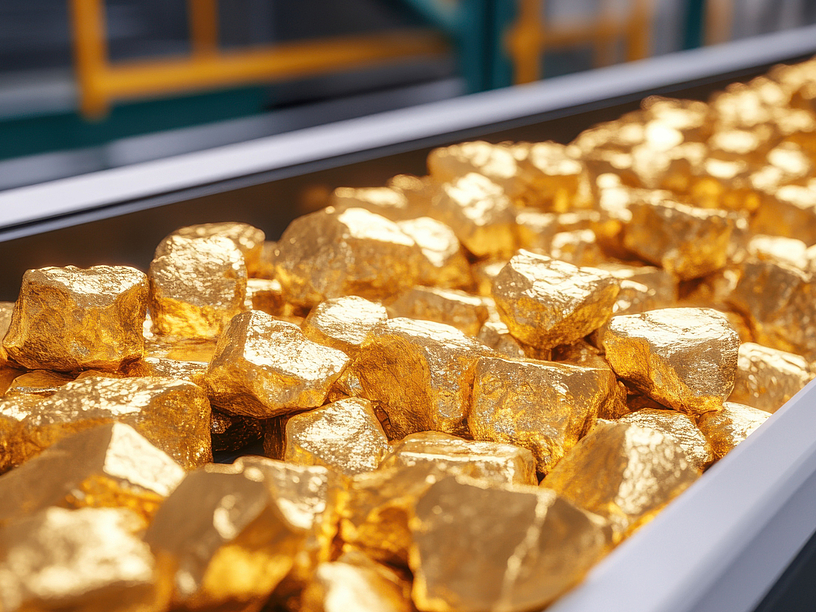Gold is generally considered a safe haven and is currently a performance driver - does that go together?
Against the backdrop of ongoing trade conflicts and increasing global uncertainties (such as US President Donald Trump's attack on the independence of the US Federal Reserve), the capital markets are volatile. In this environment, the price of gold recently reached new record highs of around USD 3,500 per ounce - an expression of increased risk aversion and a growing need for hedging on the part of institutional and private investors. The gold price could continue to be positively influenced by the major uncertainties.
A key driver of the persistently high demand is the strong commitment of central banks, which have purchased over 1,000 tons of gold net annually since 2022 - twice as much as in the previous decade. The biggest buyers of gold were the central banks of the global South, which triggered the start of the gold bull market at the exact moment when the US froze Russia's currency reserves. It is also important to mention here that the majority of central bank purchases are made in secret and without prompt reporting. Against a backdrop of geopolitical tensions, protectionist tendencies and unpredictable US foreign policy, this trend could continue.
ETF demand is also recovering: after prolonged net outflows since 2021, there was a noticeable trend reversal at the end of 2024, especially in the US and China. According to the World Gold Council, ETF exposure has risen by over 5% since the beginning of the year, which corresponds to additional gold demand of around 226 tons. Recession risks could further support this trend.
For investors, gold remains one of the best hedges against the unique combination of possible recession and stagflation risks, currency devaluation and the risks of US (foreign) policy. Further impetus is coming from China: a new pilot project allows insurance companies to purchase physical gold to diversify their portfolios. This could theoretically increase global demand by 6-7% annually. Initial investments have already been made. Jewelry demand, which continues to account for around 45% of annual gold demand, reacts strongly to price movements, but is currently being increasingly pushed into the background by strategic demand from institutional players.
The fact that gold shares are still a long way off their historic highs despite the massive rise in the gold price shows how little the precious metal buying mood has reached private investors so far.
Uncertainties drive the gold price
Due to the positive signals given by Donald Trump regarding China and the US Federal Reserve, the gold price cooled down again somewhat after reaching a record high of USD 3,500 per ounce. Trade restrictions for the manufacturing giant from the Far East are expected to be less severe than initially announced, and the feud with Federal Reserve Chairman Jerome Powell appears to have been put on ice for the time being.
Nevertheless, there are currently many factors that positively support the further development of the gold price. These include ongoing inflation concerns, primarily due to trade tensions, the structurally high or rising US budget deficit and concerns about fiscal sustainability. The US government's attacks on the independence of the US Federal Reserve also continue to smoulder and leave uncertainty in their wake. In addition, the US administration is considering intervening in the US government bond market. These issues are supporting the gold price.
The declining confidence in the US dollar as a reserve currency should also not be underestimated. Central banks continue to see untapped potential in the diversification of their currency reserves. Against the backdrop of geopolitical instability, political uncertainty and growing trade and customs policy risks, they increasingly see gold as a strategic hedge. These uncertainties are generally an important reason for investors to further increase the proportion of gold in their portfolios or to build it up now.
Two dedicated gold portfolios
The DJE Gold & Stabilitätsfonds invests up to 30% physically directly in gold, pursues a conservative, broadly diversified investment strategy and mixes in additional substantial equities and high-quality bonds. This structured allocation enables balanced risk diversification and positions the fund as a robust investment instrument in different market phases.
DJE - Gold & Ressourcen does not invest directly in physical gold, but participates through investments in gold mining stocks (these are the fund's investment focus), which have a leverage effect on the gold price. The fund has a flexible investment approach. Through the targeted allocation to companies along the value chain of various commodities - from gold and copper producers to manufacturers of building materials - the fund offers diversified exposure to the commodities sector.
Legal notice
This is a marketing advertisement. Please read the prospectus of the relevant fund and the PRIIPs KID before making a final investment decision. This also contains detailed information on opportunities and risks. These documents are available free of charge in German at www.dje.de under the fund in question. A summary of investor rights is available free of charge in German in electronic form on the website at www.dje.de/de/zusammenfassung-der-anlegerrechte. All information published here is for your information only, is subject to change at any time and does not constitute investment advice or any other recommendation. The statements contained in this document reflect the current assessment of DJE Kapital AG. The opinions expressed may change at any time without prior notice. All information in this overview has been compiled with due care in accordance with the state of knowledge at the time of preparation. However, no guarantee and no liability can be assumed for the accuracy and completeness.

